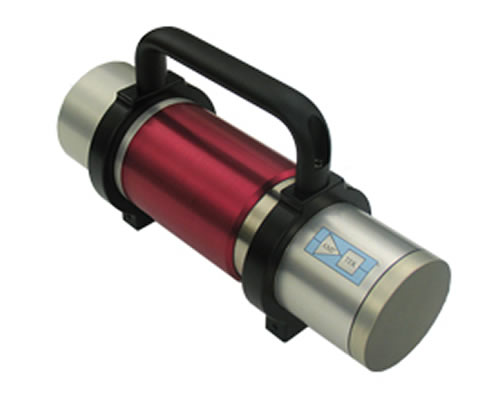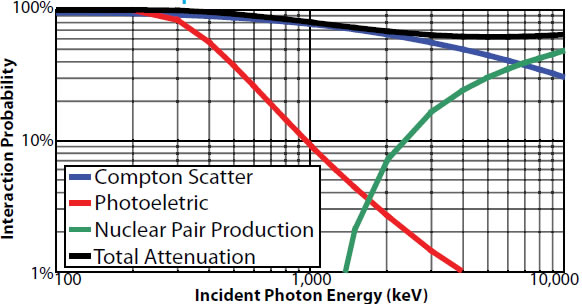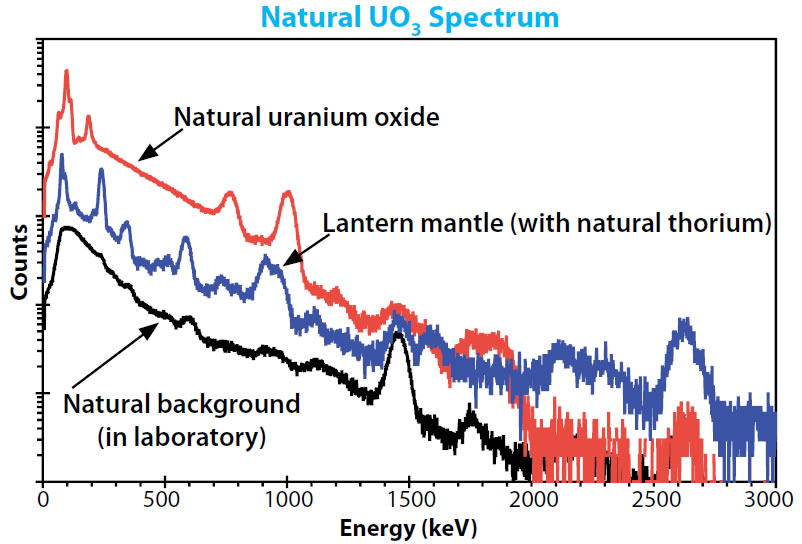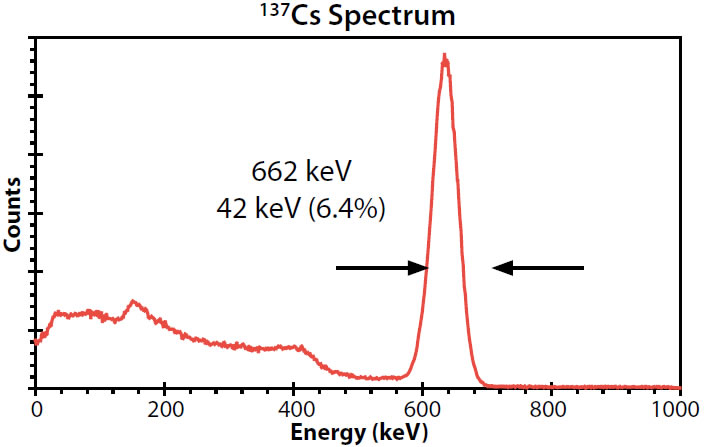


The GAMMA-RAD5 is a complete, integrated γ-ray spectrometer. It includes a scintillator and PMT, a charge sensitive preamplifier, a digital pulse processor and MCA based on Amptek’s DP5G, all the hardware and software necessary to control and communicate to a PC, and all power supplies. It is a single, integrated, portable module.
Several key innovations make this system ideal for field use. First, the scintillator and PMT are ruggedized to protect against mechanical shock and vibration. Second, the Ethernet interface permits operation over long distances: 100 m via Ethernet or, with Internet software, globally while the USB interface permits a single connection (power and data) to virtually any computer. Third, it has a flexible digital architecture so it can be easily tailored for specific applications. The GAMMA-RAD5 is ideally suited for a wide range of γ-ray spectroscopy measurements, from lab applications to most harsh field homeland security applications.
| Detector | |
The detector is a ruggedized scintillator and PMT. The 76 x 76 mm NaI(Tl) is considered standard, but many different configurations are possible. Contact Amptek for details. The detector performance (resolution, stopping power, photofraction, etc.) are determined by the scintillation crystal. 76 x 76 mm NaI(Tl) Efficiency Computed Interaction Probabilities 
|
|
| Pulse Processing Performance | |
| Gain Settings | Four software selectable coarse gain settings are available: 3 MeV full scale to 750 keV full scale. Fine gain is adjustable between 0.75 and 1.25. |
| Pulse Shape | Trapezoidal, typically set to 2.4 μs peaking time (1 μs shaping time constant), software selectable from 0.8 to 102.4 μs. The flat top has 63 software selectable values for each peaking time. The fast channel, used for pile-up rejection and pulse shape discrimination, has a pulse pair resolving time of 0.25 or 0.5 μs. |
| Gain Stabilization | The gain from the NaI(Tl) and PMT is well known to vary with temperature. A software gain stabilization algorithm is available. |
| Maximum Count Rate, Dead Time, and Throughput | With the typical configuration, Tpeak=2.4 μs, the maximum input count rate is 1.5 x 105 cps with a throughput of >50% and good baseline stability and pile-up rejection. At Tpeak=0.8 μs, the maximum input count rate is 2 x 105 cps. |
| Custom Configuration | The DP5G is set at the factory for either a 20 MHz or 80 MHz clock. For NaI(Tl), the 20 MHz is standard, yielding the specifications listed above. The 80 MHz setting allows for peaking times down to 0.1 μs in the slow channel and 0.05 μs in the.fast channel but draws about 50% more power. The 80 MHz setting is recommended for custom scintillation materials with faster decay times, fast pulse shape discrimination, or other unique requirements |
| MCA Performance | |
| Number of channels | Commandable to 8k , 4k, 2k, 1k, 0.5k,or 0.25k channels. |
| Presets | Time, total counts, counts in an ROI, counts ina single channel. Minimum acquisition time is <10 ms. |
| External Connections | |
| USB | Standard 2.0 full-speed (12 mbps). Provides both serial data and power for the entire GAMMA-RAD5. |
| Ethernet | 10Base-T or UDP, DHCP or fixed IP. |
| RS232 | Standard serial interface 115 Kbaud. |
| DAC Output | Single pin LEMO connector. |
| Aux I/O | Gate, 8 SCAs |
| Power | |
| +5 V | Average current 150 mA. Entire GAMMA-RAD5 can be powered from USB. |
| Range | 3.0 to 6.4V. |
| High Voltage | A stabilized, high efficiency Cockroft-Walton power supply provides PMT bias. HV is software controlled. |
| Physical (76 x 76 mm NaI(Tl)) | |
| Size | 31.5 cm X 9.2 cm (dia) |
| Mass | 3.6 kg |
| Interface Software | |
| DPPMCA is a standard data acquisition and control package, for use with all of Amptek’s digital processors and MCAs, including the GAMMA-RAD5. This package provides the capability to configure the GAMMA-RAD5 and acquire and save data. It is described in detail on Amptek’s website, where it may be downloaded. Amptek provides a software developer’s kit so that users can write their own interface software. Also included are example routines, written in Visual Basic and Visual C++, which can be used to control data acquisition. These can be tailored for specific uses. |
|


An example program is provided with the GAMMA-RAD5 to aid in long term monitoring where weak sources are present. This program automatically saves a spectrum at user defined intervals, it provides gain stabilization using the 40K background peak, and it provides a simple ROI analysis capability to verify if suspect counts are present above preset thresholds. This software can run on a laptop, connected to the GAMMARAD5 by a USB cable. It can also run over an Ethernet link and the Internet, and be monitored on the other side of the world. The plot on the right shows a background spectrum and measurements from natural UO3 and a lantern mantle containing natural thorium.

The same software used for the environmental monitoring application can be used in a pedestrian or vehicle portal monitor using much shorter data acquisition intervals. The plot below shows the count rate, both total (red line) and in the 662 keV peak (small graph on right), when a pedestrian walked by the 76 X 76 mm detector at a distance of 10 feet with a 100 μCi 137Cs. A standard Geiger counter was unable to detect the source, since it registered a natural background of 0.02 mR/hr before and during the pedestrian incident, but the GAMMA-RAD5 clearly detected it and identified the energy.

The photo above shows a high sensitivity detector, a 10 x 10 x 40 cm3 (4 x 4 x 16") NaI(Tl) "bar."

With a custom detector, a single GammaRad5 module can provide neutron detection while measuring the gamma-ray spectrum. The key is the use of a “Phoswich” detector, a sandwich of two scintillators mated to a single photomultiplier tube. A LiI(Eu) crystal is added to the standard NaI(Tl) scintillator. The NaI(Tl) measures the gamma-ray spectrum. The lithium is enriched in 6Li, providing for efficient detection of neutrons via the 6Li(n,α) reaction. The two scintillators produce different pulse shapes, so the DP5’s pulse shape discrimination is used to distinguish between them.

The photograph on the right shows an application that takes full advantage of the ruggedization of the GAMMA-RAD5. The GAMMA-RAD5 modules are mounted on the VeriSpreader™ bar of the crane that lifts shipping containers. Radiation detection is carried out during routine handling so there is no delay in processing. The spectroscopy performance keeps the false positive rate at a very low level, which is a vital concern.



The GAMMA-RAD5 uses an enhanced digital processor, the DP5G, while the GAMMA-RAD used Amptek’s DP4.
Copyright © 2024 www.xscientific.tech
All rights reserved.